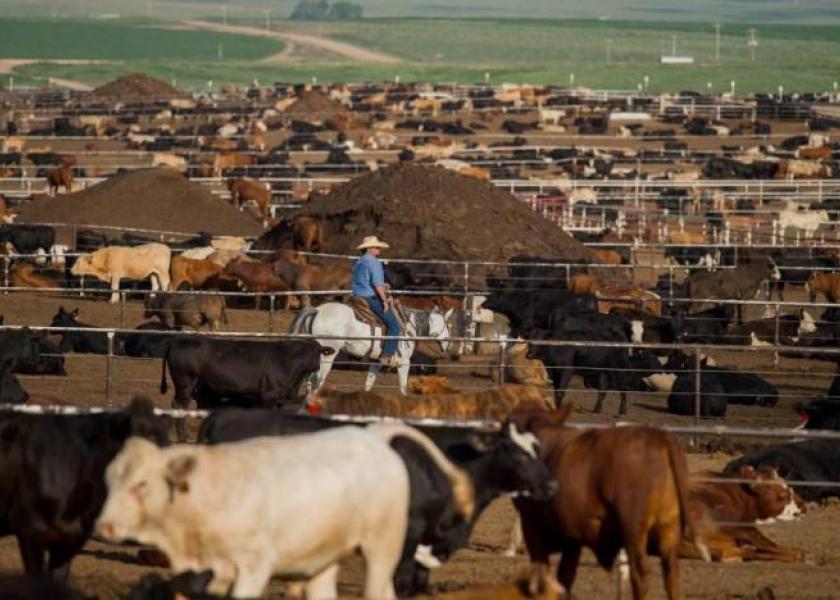Green Plains Exits Cattle Feeding Business

Omaha-based Green Plains Inc. has sold the remaining 50% interest in Green Plains Cattle Co. LLC, for $80 million, according to an announcement from the company. Buyers are a group of investment funds that include AGR Partners and StepStone Group.
The transaction was signed Oct. 9, 2020, with an effective date of Oct. 1, 2020.
AGR Partners provides capital through non-controlling equity and subordinated debt to cultivate long-term growth in leading food and agribusiness companies, and StepStone Group is a global private markets firm providing customized investment and advisory solutions to investors, according to the companies’ websites.
“With the sale of our remaining ownership in Green Plains Cattle Company, combined with our recent quarterly distribution and earnings bonus from performance of the cattle business, we have added approximately $96 million of liquidity to our balance sheet,” said Todd Becker, president and CEO of Green Plains, Inc. “This sale allows us to redeploy capital to support our long-term objective of building a technology focused biorefining platform, producing sustainable, high-value, high-protein ingredients the market needs.”
Green Plains entered the cattle feeding industry in June 2014, with the purchase of Supreme Cattle Feeders, a 70,000-head feedyard in Kismet, Kan. Over the past six years, Green Plains Cattle Company grew to become the fourth largest cattle feeder in the United States with a total capacity of more than 355,000 head of cattle across six feedlots in Colorado, Kansas and Texas.
In September of last year, Green Plains sold 50% of Green Plains Cattle Co. LLC for $77 million. The sale was a joint venture by Green Plains and a group of investment funds that include AGR Partners, TGAM Agribusiness Fund Holdings-B LP and StepStone Atlantic Fund LP.
In 2018, Green Plains Cattle Company purchased Bartlett & Co’s two feedlots for $16 million. The two feedlots were in Sublette, Kan., and Tulia, Tex., with a combined capacity of 97,000 head.
Prior to the Bartlett purchase, in 2017 Green Plains purchased Cargill’s remaining feedlots in Kansas and Colorado with a capacity of 155,000 for $36.7 million.
Regarding Green Plains’ sale of its remaining 50% in Green Plains Cattle Co., Becker said, “This transaction further streamlines our business to focus on the transformation to a world-class provider of high value ingredients, which includes the deployment of high protein technology as a natural line extension to our platform. The proceeds from the sale and distribution, coupled with our previously announced tax refund and $75 million in protein financing, will add nearly $225 million of liquidity to Green Plains, or over half the remaining amount needed to fund the build-out of high protein technology.”
As part of the transaction, Todd Becker will remain on the board of directors of Green Plains Cattle Company for the next year to assist in the transition.
About Green Plains Inc.
Green Plains Inc. (NASDAQ:GPRE) is a diversified commodity-processing business with operations that include corn processing, grain handling and storage and commodity marketing and logistics services. The company is one of the leading corn processors in the world and, through its adjacent businesses, is focused on the production of sustainable biofuels and sustainable high protein and novel feed ingredients. Green Plains owns a 48.9% limited partner interest and a 2.0% general partner interest in Green Plains Partners LP. For more information about Green Plains, visit www.gpreinc.com.
Related stories:







